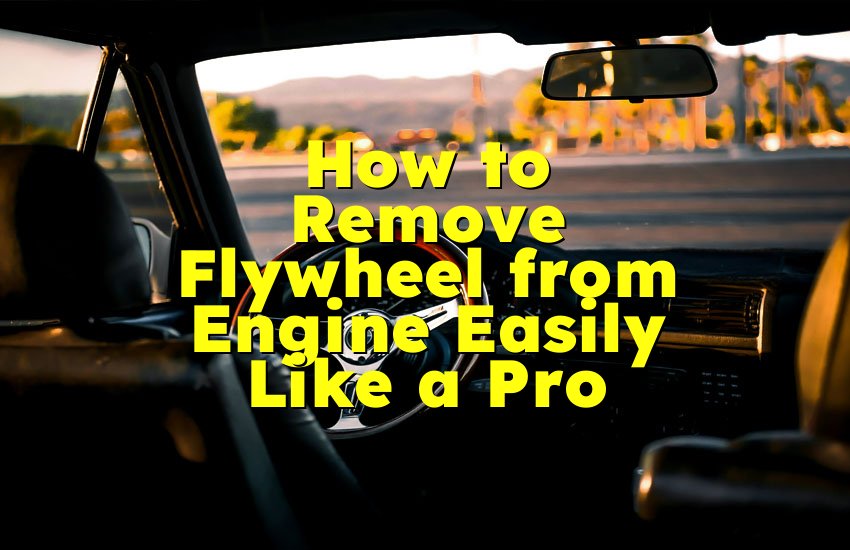As an Amazon Associate, I earn from qualifying purchases at no extra cost to you.
Can You Add Coolant to Reservoir When Car is Hot? What Every Driver Must Know
You might be in a rush, your engine starts overheating, and you think about adding coolant to the reservoir while the car is hot. But wait — is that safe? Many drivers face this exact situation, especially during long road trips or hot weather. In this article, we'll break it all down in the easiest way possible. You'll learn everything you need to know to keep your car safe and running smoothly. Let's explore the facts together so you don’t make a costly mistake.
What Happens When Your Car Gets Too Hot
Understanding How a Car Cools Itself Down
Your car engine creates a lot of heat while it runs. Just like your body needs to stay at the right temperature, your car engine needs to stay cool to work well. That's where the cooling system comes in. The main job of the cooling system is to move heat away from the engine. The system has a few key parts like the radiator, water pump, thermostat, cooling fans, and of course, the coolant itself.
Coolant, sometimes called antifreeze, flows through the engine and carries heat away. Then it moves to the radiator, where the heat is released into the air. This cycle keeps the engine at a safe temperature. If any part of this cooling system fails, the engine can overheat.
Why an Overheating Engine Is Dangerous
When the engine gets too hot, it can damage itself. Metal parts can expand, melt, or even crack. Gaskets can blow, and the engine can seize up. That means it could stop working completely. Repairs for this type of damage are often very expensive.
Also, overheating can cause steam to come from under the hood. This can look scary and may lead you to act quickly. But rushing to open the coolant cap or pour coolant into a hot engine can be very risky. You could hurt yourself or make the problem worse.
How Coolant Works Inside the System
Coolant is a special liquid that doesn't just cool the engine. It also stops it from freezing in cold weather and prevents rust from forming inside the engine. It's made to handle high heat and flow smoothly through the cooling system. But it works best when the car is running at a normal temperature.
When the car is hot, the coolant inside is under pressure. That's because heat makes liquid expand. This pressure helps push coolant through the engine and radiator, but it also makes it dangerous to open the reservoir cap.
What Happens When Coolant Is Low
Sometimes coolant levels get low. This might be because of a small leak, evaporation, or just time passing. If you see the temperature gauge going up, steam coming out, or a warning light on your dashboard, you might be running low on coolant. In that case, you might think it's time to add more.
But before you do anything, you must understand how dangerous it can be to add coolant while the engine is still hot. The coolant and steam inside are under pressure. Opening the cap too soon can cause it to spray out and burn your skin or eyes. That's why you must always be careful and follow the right steps.
Should You Add Coolant to the Reservoir While the Car Is Hot?
The Simple Answer Is: No, Not Right Away
If your car is hot and overheating, you might feel tempted to open the hood and pour in coolant immediately. But doing this without waiting can be a big mistake. You must let the engine cool down before adding anything. Opening the coolant reservoir while the car is hot is dangerous because the system is still pressurized. Hot coolant can spray out and cause serious burns. It can even hit your face or hands if you’re not careful.
Why the Coolant System Is Pressurized
As the engine heats up, the coolant inside also heats up and expands. This builds up pressure inside the reservoir. That's why the reservoir cap is specially designed to hold that pressure. It’s called a “pressure cap.” When the pressure gets too high, the cap lets some coolant overflow into the extra reservoir to keep the system balanced. But if you remove the cap too early, all that hot coolant and steam can shoot out quickly.
How to Tell If It’s Safe to Add Coolant
You should wait at least 30 to 45 minutes after turning off your engine before touching the coolant reservoir cap. Even then, you should still be careful. Touch the hood to feel if it's still too hot. You can also open the hood to let the heat escape faster. Never rush to add coolant while everything is still steaming or hissing. That's a clear sign the system is still too hot.
If you’re in a hurry, and you absolutely must add coolant, try this method. First, turn off the engine and open the hood. Then wait 30 minutes. After that, use a thick cloth or glove to gently twist the cap. Open it slowly to release pressure bit by bit. If you hear a loud hissing sound or see steam, stop and wait longer.
What to Do While You Wait
While you’re waiting for your car to cool down, it's smart to stay safe and calm. Turn on your hazard lights if you're on the road. Let other drivers know you're having car trouble. If possible, park in the shade or open all the doors to cool the inside. You can also check for leaks under the car or look at the reservoir to see if it’s empty. Don't try to drive until you're sure the engine has cooled and you’ve added coolant safely.
How to Properly Add Coolant After the Engine Cools Down
Step 1: Make Sure the Engine Is Fully Cool
The first step is the most important. Never skip this one. Wait at least 30 to 45 minutes, even an hour if you can. Check if the engine is still giving off heat or steam. If it is, wait longer. Touch the top of the radiator or engine cover carefully. If it's cool enough to touch, it's probably safe to move to the next step.
Step 2: Find the Coolant Reservoir
Open your car hood and look for the plastic tank on the side of the engine area. It usually has a cap labeled "coolant" or "engine coolant." Some tanks have see-through plastic so you can see the level without opening the cap. There will be markings on the side that say "Low" and "Full" or "Min" and "Max."
If the coolant is below the "Low" line, then you do need to add more. If it's already near the "Full" line, then you probably don't need to add any.
Step 3: Choose the Right Coolant
You can't just pour in any liquid. Use the right type of coolant for your car. Check your owner’s manual or the cap of the reservoir. Most coolants are a mix of antifreeze and water. You can buy pre-mixed coolant or mix it yourself (usually 50/50). Never use plain water by itself for long-term use. It can cause rust and doesn't protect the engine well.
Also, never mix different types of coolant (green, orange, pink, etc.) unless they are marked as universal. Mixing the wrong kinds can cause gelling or clogging.
Step 4: Slowly Add Coolant to the Reservoir
Once you're sure the engine is cool and the pressure is gone, you can open the cap slowly. Use a thick cloth or glove. Tilt the cap and let any last bit of steam out before opening it fully. Then, slowly pour in the coolant until it reaches the "Full" or "Max" line. Don't overfill it.
Take your time with this. Pouring too fast can cause air bubbles or overflow. Let the coolant settle for a few seconds before checking the level again.
Step 5: Close the Cap and Start the Engine
After filling the reservoir, put the cap back on tightly. Then start your engine and let it run for a few minutes. This helps the new coolant move through the system. Keep an eye on the temperature gauge. If it goes back to normal, that's a good sign.
You might also see the coolant level go down a little as it spreads through the system. That's normal. After a few hours of driving, check the level again and add more if needed.
Step 6: Watch for Leaks or Problems
If your coolant level keeps dropping, or if the engine keeps overheating, there might be a bigger issue like a leak, broken thermostat, or radiator problem. Look under your car for puddles of coolant. Coolant is usually green, orange, or pink and has a sweet smell.
If you find leaks or your car keeps overheating even with full coolant, it’s best to visit a mechanic. Don't ignore these signs, or you might end up with engine damage that costs a lot to fix.
Tips to Avoid Coolant Problems in the Future
Check Coolant Levels Regularly
Make it a habit to check your coolant level at least once a month. It only takes a minute and can save you from big trouble. Always check when the engine is cold. Just open the hood, look at the reservoir, and make sure the coolant is between the "Low" and "Full" marks.
If you see the level slowly going down over time, you may have a small leak. Keep an eye on it and refill when needed.
Replace Old Coolant On Time
Coolant doesn't last forever. Over time, it breaks down and loses its ability to protect your engine. It also collects dirt and becomes less effective. Most car makers suggest changing coolant every 2 to 5 years or after 30,000 to 60,000 miles, depending on your car and the type of coolant.
Check your owner's manual for the right schedule. Flushing the system and adding new coolant keeps everything working smoothly.
Fix Small Leaks Before They Get Bigger
If you see wet spots or stains around your radiator, water pump, or hoses, you might have a small leak. Don't wait to fix it. Small leaks can quickly turn into big ones. A cheap repair today could save you from a $1,000 repair tomorrow.
Visit a mechanic or use a radiator sealant if it's a very tiny leak. But don't depend on sealants too much. They're only a temporary fix.
Keep an Emergency Kit in Your Car
It's smart to keep a bottle of the right coolant in your car's trunk. Also, carry a clean funnel, gloves, and a towel. That way, if you ever face an overheating issue on the road, you'll be ready to handle it safely once the engine cools down. This small step can save you from being stuck or waiting for a tow truck.
I hope this article helped you understand why you should never add coolant while your car is hot. Take your time, wait for the engine to cool down, and follow the safe steps. This simple care can protect your car from damage and keep you safe on the road.
Frequently Asked Questions (FAQs)
Is it safe to open the coolant reservoir when my engine is hot?
It is not safe to open the coolant reservoir when your engine is hot. The coolant system becomes pressurized when the engine heats up. If you open the reservoir cap while it’s still hot, steam and hot coolant can shoot out. This can cause serious burns or injury to your face, hands, or arms.
It's always better to wait at least 30 to 45 minutes after turning off your engine. If the hood or engine cover still feels hot to the touch, wait longer. Use a thick cloth or gloves if you must open the cap and always do it slowly. Let any built-up pressure escape gradually. Being careful can keep you safe and stop any sudden spray of hot liquid.
Can I add coolant to the reservoir without flushing the system?
Yes, you can add coolant to the reservoir without flushing the system if the coolant is just low. A top-up is often enough if there's no old, dirty coolant inside. But if your coolant is old, rusty, or looks brown and dirty, then flushing is a good idea.
Flushing removes old fluid and any dirt or rust that could harm the cooling system. Topping off is fine for small fixes, but flushing is better for long-term care. Always use the right type of coolant and don't mix types unless it's labeled as universal. Check your owner’s manual or ask a mechanic if you’re unsure.
Do I need to add coolant to both the radiator and the reservoir?
In most cases, you only need to add coolant to the reservoir. The reservoir is connected to the radiator and helps keep the system balanced. When the engine heats up, extra coolant flows into the reservoir. When it cools down, it flows back into the radiator.
If your car has been running properly, topping off the reservoir is usually enough. But if your car has completely lost coolant or has a leak, you might need to add coolant to both the radiator and the reservoir. Only do this when the engine is completely cool. Some cars have no radiator cap, only a reservoir, so check your owner’s manual to be sure.
Is it okay to drive if my coolant is low but not empty?
Driving with low coolant is risky. Even if the reservoir is not empty, low coolant can lead to engine overheating. The engine needs enough coolant to stay at the right temperature. If it overheats, it can cause serious engine damage that costs a lot to fix.
If you notice the temperature gauge climbing or a warning light on the dashboard, stop driving as soon as it's safe. Let the engine cool down, check the coolant level, and add more if needed. Always carry extra coolant in your trunk for emergencies. Don't ignore low levels, even if they seem small.
Can I mix water with coolant in an emergency?
Yes, in an emergency, you can mix water with coolant. If you don't have pre-mixed coolant or antifreeze, clean water can help you get to a repair shop. But remember, water alone is not a long-term solution. It doesn't protect your engine from rust or freezing.
It also boils faster than coolant, which can lead to more overheating. If you use water in an emergency, make sure to refill with the correct coolant mix as soon as possible. Try to use distilled water instead of tap water if you can, because tap water may contain minerals that can clog the cooling system.
Do I have to use the same color coolant that was already in the reservoir?
Yes, it's best to use the same color coolant. Different colors usually mean different chemical formulas. For example, green, orange, pink, and blue coolants are all made for different types of vehicles and systems. Mixing them can cause thick gels or blockages that harm your engine.
Always check your owner's manual to see which type your car needs. If you’re unsure, take a picture of your coolant cap or the old bottle and ask at an auto shop. Some coolants are labeled “universal,” and they work with many vehicles. Still, it's safest to stick with the same type to avoid problems.
Is it normal for coolant levels to drop a little over time?
Yes, it's normal for coolant levels to drop slightly over time. Small changes can happen from evaporation or tiny leaks. As long as the level stays close to the "Full" or "Max" line, it's usually fine. But if you notice a big drop or you have to refill often, then something might be wrong.
You could have a leak in a hose, radiator, or water pump. You might also have a bad head gasket, which is serious. Always check the ground where you park for puddles or spots. If the drop is large or keeps happening, visit a mechanic to find the cause.
Can overheating damage the engine even if I fix it quickly?
Yes, even short periods of overheating can damage your engine. When an engine overheats, metal parts can warp or crack. The head gasket may blow, and coolant can leak into the engine oil. These problems can be hard to see at first but may get worse over time.
Fixing the coolant level quickly helps, but it doesn't erase any damage that may have already happened. If your car overheats, stop right away, turn off the engine, and let it cool down. After fixing the coolant, watch your car closely. If you hear strange noises or see smoke or leaks, get it checked by a mechanic.











